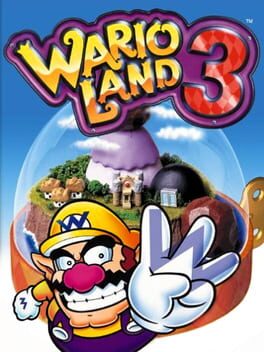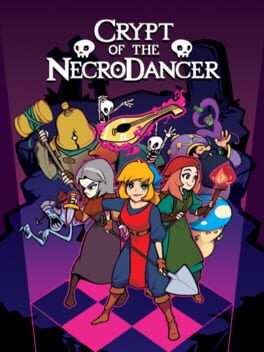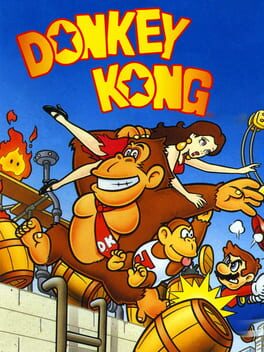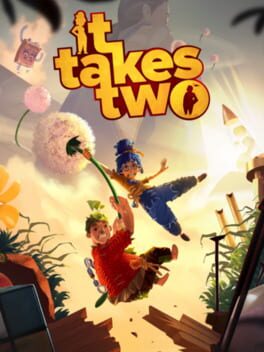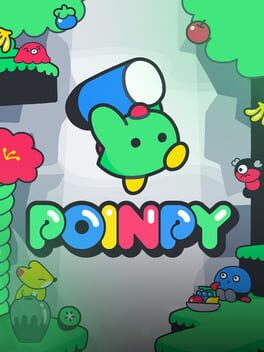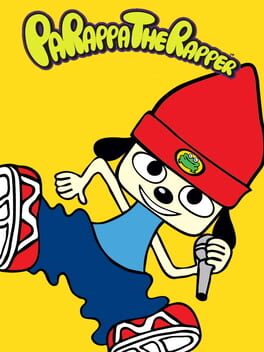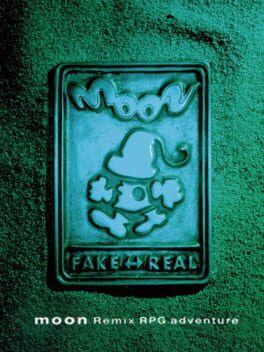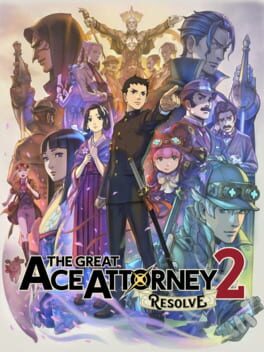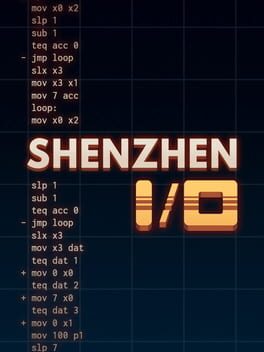chump
2000
The fourth Wario Land is a personal classic, but even I must bow my head and acknowledge 3's superior dedication to unconventional platforming status. The experiment that began with Wario Land II reached its natural conclusion here, and the end result makes 4's health meter look bog standard in comparison. In this land, reward and punishment are one and the same- bizarre, often grotesque perversions of Wario's sprite and, by proxy, the way that he has to look at the world around him. Whether these transformations are powerups or power... downs depends entirely on the situation. Becoming a spring allows Wario to reach higher-up areas, just make sure to avoid it when trying to make your way downwards. Invisibility lets him bypass motion-detecting security doors, but incidentally turns rudimentary platforming into a challenge. Each of the dozen-or-so abilities can be described in a similar double-edged fashion, but their cleverness really has to be seen to be believed. Figuring out which transformation you need while figuring out which key you need while also figuring out how to get that transformation in the appropriate spot (and, if necessary, even how to get rid of it once you're done) as every bite-sized stage unravels and reveals its deliciously tricky nature. When state transitions, the very foundation of a platformer, are a puzzle in and of themselves, the level design comes naturally, and Wario Land 3 leaves no stone unturned while constructing its areas to enhance the game's supreme mechanical cohesion. Well, except...
Where it loses me: returning to previous stages after an unlock. These come in the form of Samus Aranesque moveset additions or more unique contextual changes to the world map, and are all almost unanimously disappointing. Instead of requiring the player to evaluate what's different when coming back to a familiar place, usually some obstacle near the entrance has been removed, which lets Wario access, in essence, an entirely new level. It's hard to fault the game for this decision, as forcing inter-playsession analysis is typically seen as a sin against the tenants of handheld gaming, but it still feels like the only blight on its otherwise hyper-focused design. In retrospect, 4's "hurry up" sections present a solution to this problem: portions of the game that reward observant players who are able to predict level mutations before they happen without breaking the pick-up-and-play mantra. Of course, including these means Wario has to be capable of getting the lead out, which, also in retrospect, creates another conundrum. 3's sluggish Wario is hardly bothered by traditional platforming punishments that serve to slow him down, as he can barely even move in the first place, but 4's agile Wario clashes with the inherently time-consuming nature of transformations. It's an issue that, I, in my infinite wisdom, don't have the solution to, but perhaps it's one that indicates how distinct the series is above all else- it's hard to imagine that guy in red running into anything similar.
Where it loses me: returning to previous stages after an unlock. These come in the form of Samus Aranesque moveset additions or more unique contextual changes to the world map, and are all almost unanimously disappointing. Instead of requiring the player to evaluate what's different when coming back to a familiar place, usually some obstacle near the entrance has been removed, which lets Wario access, in essence, an entirely new level. It's hard to fault the game for this decision, as forcing inter-playsession analysis is typically seen as a sin against the tenants of handheld gaming, but it still feels like the only blight on its otherwise hyper-focused design. In retrospect, 4's "hurry up" sections present a solution to this problem: portions of the game that reward observant players who are able to predict level mutations before they happen without breaking the pick-up-and-play mantra. Of course, including these means Wario has to be capable of getting the lead out, which, also in retrospect, creates another conundrum. 3's sluggish Wario is hardly bothered by traditional platforming punishments that serve to slow him down, as he can barely even move in the first place, but 4's agile Wario clashes with the inherently time-consuming nature of transformations. It's an issue that, I, in my infinite wisdom, don't have the solution to, but perhaps it's one that indicates how distinct the series is above all else- it's hard to imagine that guy in red running into anything similar.
For me, I think what kills the roguelike, or at least its modern incarnation, is that it hardly ever feels like what you're actually doing is all that interesting. The prominent entries of the genre are mostly barebones twin-stick shooters and top-down hacks-and-slash where the only skill that you end up learning is the ability to remember what hundreds of different enemies and upgrades do, a feat better accomplished by crawling the wiki than the dungeon. The assertion that roguelikes are the successors to arcade gaming has always been lost on me, because, in my eyes, they're really polar opposites. The best arcade games tend to have complex (but often deceptively simple) movesets and extremely basic, easily-digestible enemy types, a legacy that Cadence fulfills better than any of her peers. By default, all it takes to play Necrodancer is the four arrow keys, and yet it's able to create a sickeningly high skill ceiling, in no small part due to the crypt's inhabitants, or, more accurately, their simplicity. Enemies in this game are so absurdly basic that their AI can usually be described in less than a single sentence, meaning they don't pose any semblance of a threat by themselves. Instead, the challenge comes from clearing out a room full of them, using a set of mechanics that's, in essence, a tactical RPG where you should always be able to know what each of your opponents are going to do on their next turn. But therein lies the rub, and the justification for the light rhythm elements, because you're only given a fraction of a second to analyze each situation. The end result is an inherently fair experience- if you die, it's because your processing power isn't fast enough, not because you're unfamiliar with any of the rules. Upgrades uphold this by entirely being simple +1s to your attack, range, defense, health, or some other self-explanatory factor, but their lack of complexity doesn't stifle how much minute creativity is involved. Cleverly carving out more room for yourself, getting a dragon to take out enemies for you, or breaking a barrel with a trap to save your only bomb. All part of a language that you can feel yourself learning every time you game over, but also one that, admittedly, takes a lot of time to even start babbling in. It shouldn't be surprising that a game with this high of a skill ceiling (after forty hours I'm nowhere near good enough to beat all zones with Aria, and she's far from the hardest character) has such a steep learning curve, though I wish it was managed better, considering almost everyone I've recommended it to was able to breeze through zone 1 and then gave up on zone 2. But heed my advice, keep digging, and you'll find a challenge that genuinely rewards the work you put in.
Oh, and it should go without saying, but one of the most heart-pounding soundtracks out there. REANIMATE!
Oh, and it should go without saying, but one of the most heart-pounding soundtracks out there. REANIMATE!
1994
Less of a Donkey Kong Eighty-One remake and more of a Mario Sixty-Four premake. The arcade classic entirely revolves around precise platforming under an extremely restrictive moveset, and while some familiar physics quirks remain, DK '94 instead opts for a loose, flexible approach. The one major feature that survived the porting process is the scale of each level, but while the original saw its single-screen stages as linear paths for Jumpman to run through as an ape hurls the kitchen sink at him, the Game Boy edition treats them more like open-ended jungle gyms. The Super Mario 64 comparison is half literal and half figurative: the game features primitive versions of both the side and triple jumps, but these moves are representative of a design philosophy that allows skilled players to cruise through each exit on their own terms. Theoretically, this should clash with the fact that DK '94 is, indeed, a puzzle platformer, but the puzzles in question generally lack a single, strict solution and mostly serve to add variable state to otherwise simple level layouts. This means that they hardly ever slow Mario down, and instead just create another set of tools for players to improvise with while routing through each stage. The microscopic scale justifies itself here- not only because of the pick-up-and-play nature of handheld gaming, but because being able to see most, if not all, of the course at once lets you immediately plan out which parts of it you're going to attempt to skip, bolstered by the return of Lady's lost items as sub-objectives. And of course, this was Nintendo during its apex years, so it's a forgone conclusion that every individual level mechanic in here is introduced and combined with every other one flawlessly. Interestingly, observant Marioheads might notice that this game also features some experimentation with non-failstate punishments that would later define the Wario Land series. Most notably, if Mario falls from a high drop, but not one large to kill him, he'll enter a roll when he lands. This not only leaves him exposed to enemies, but also drops the item he's holding and denies the player control for a few seconds. In a game where quick, stylish traversal is the greatest reward, awkward, time-wasting mistakes may actually be worse than death. Just a fraction of the ingenuity that makes up, in my opinion, the very best OG Game Boy title.
2021
The definitive argument against video game cutscenes, like, in general. On top of the awkwardness of it all- ugly character designs, stilted dialog, everyone prancing back and forth like they just dropped out of Foodfight!- the framing of an otherwise generic relationship simulator as a marriage does more harm than good, since completing this game requires about as much trust and communication as a corporate teambuilding exercise. Sure, I can skewer my wife with a giant nail or hop off the button that's holding up a bridge as she's trying to cross it, but how much does that actually mean for our relationship if I only do it because I know she's going to respawn next to me in two seconds? I hate to say it, but universal splitscreen also seems like a mistake, since conflict resolution isn't really an issue when both parties can, in the most literal sense possible, see from the other's point-of-view. In general, the game lives up to its premise as an anything-goes platformer much more than it does its premise as a co-op platformer, considering the most entertaining bits in here tend to be the stuff that's just fun to mess around with, even if it doesn't necessarily Take Two. On one hand, it's hard not to appreciate this much dedication to breadth over depth, and riffing with a pal and calling out every video game trope as it happens is far from an unenjoyable experience, but I can't help feeling like the game's reception mostly stems from how undersaturated the market is. If it ends up inspiring a wave of strictly co-op titles now that the genre has proven itself to be critically and commercially viable, I could see this game quote-unquote "aging poorly" ten years down the line. Not because it actually has, of course, but because, aside from the novelty of playing something this accessible, with this much varied, well-put-together content, all while tethered to another person, It Takes Two... was never really all that interesting in the first place. But maybe I'm just bitter that I lost at that volleyball minigame.
Technically the second paperwork simulator that Lucas Pope has made in a row. I would tell him to get some new material, but in reality his two most recent games could hardly be any further apart. While Papers, Please is a miraculous implementation of a terrible concept, Return of the Obra Dinn is more of a... decent implementation of a miraculous concept. It's tempting to say that this game's nearest ancestor is Ghost Trick, what with the premise of time-traveling to the moment of each side character's death and whatnot, but, ironically, it's probably closer to something like the Ace Attorney series. Both are similarly unique in how they reveal plot details in a disorganized, incomplete fashion and then require the player to figure out what's truly going on to progress. Though, compared to our insurance inspector here, Phoenix Wright actually has to put something on the line in order to get his work done. Usually it's trivial- risking a game over that hardly matters or just some snide comments from the judge and the prosecutor-of-the-week- but messing up does mean something. And make no mistake, guesswork is very much the dominant strategy onboard the Obra Dinn. It's more effective to be half-certain about a dozen fates than absolutely certain on one or two. It's an age old problem for the genre: failstates are completely irrelevant when information is the only goal, but I still wish the game tried any kind of punishment for putting forth incorrect answers, especially since that's absolutely something our main character would have to deal with himself. Or, at the very least, done away with automatic fate validation, which is arguably part of a bigger problem. On top of magically telling you when any three of your guesses are correct, your journal matches faces to pictures, reflexively records which crew members were present in each memory, and determines which lines were spoken by the victim before his or her death. Obviously, this was all done to promote convenience, but it comes at the expense of making you feel less like a detective. Most of the time, it seemed like my journal was playing the part of Holmes and I was just its Watson. My ideal version of this game would have you doing everything an inspector should be doing- mainly, using physical space to trace through the behavior of each personnel member and then forming hypotheses about where they were at any particular moment in time, which I never found myself trying outside of a few exceptions. Instead, what felt like ninety percent of my deductions came from two sources: the portrait of the crew and the dialog before each death. It's probably not a catch-all solution, but I think I would have preferred if there were fewer corpses but each memory allowed you to explore the entire ship. The game's best moments come from noticing something that wasn't the focal point of a flashback, and this would serve to amplify that, alongside both allowing more room for creative theories about what happened in between memories and adding to the build-up for the reveal of the story's supernatural elements. Though, if solving fates isn't entirely fulfilling, it's sure as hell satisfying. For all of my complaining, I can't pretend that I didn't stand up and take a five-minute victory lap after every set of three that I got correct. If Papers, Please's "cutscenes" weren't proof enough, Pope is a master of subtle aesthetic flourishes, and something about the abrupt relinquishment of control after selecting the right name, followed by the cut to black and the congratulatory text before the fates are permanently added to the journal just feels so good. Despite how harsh this review may seem, it's touches like this that make the game enjoyable overall. At its worst, it's still an undeniably well-researched, well-crafted and aggressively entertaining diorama simulator. Definitely an experience that I could recommend to just about anyone, but it too frequently feels closer to something like Gone Home than the nautical detective game that I was sold on.
2018
Not even the term "roguelite" feels appropriate anymore. I'd say Hades is closer to a roguelite-lite, because now the meta-progression is the main event and the actual randomized dungeon crawl more of an afterthought. In hindsight, I'm surprised it's taken Supergiant, who historically develop games for the sole purpose of padding out a seemingly pre-written script, this long to make this game, since they're now given infinitely more nooks and crannies to cram situational dialog into. Critiquing it as a roguelike wouldn't be fair; it's not even trying to deliver a fulfilling, high skill-ceiling experience that hinges on the player's ability to take advantage of good luck and creatively adapt to overcome misfortune. It's addicting, yes, but for all the wrong reasons- instead of embracing the arcade philosophy of only giving players enough motivation to break through to the next level on their own, it buries its gameplay shortcomings under a mountain of extrinsic reward. It's specifically designed to be too hard with no upgrades and too easy with upgrades, in an effort to dripfeed the player story details in a way that appears natural. Though, it seems like this approach requires a substantial amount of willful ignorance to actually be effective. For me, at least, finally beating Hades (the guy) felt like less of a monumental accomplishment and more of an item on a checklist that I'd crossed off before being carted away to the next stop on the assembly line, which nullifies any potential benefit of the roguelike structure. That's not to say the concept is broken at its core, and it's hard to deny the appeal of the dynamic hubworld and the overall level of contextualization given to a traditionally abstract genre. I can certainly imagine falling in love with this game if it really did feel like all the dialog corresponded 1:1 with your actions, but I'm skeptical that this accurately describes every fan of Hades. Not to pluck my own lyre, but NPCs consistently felt behind the times for me, still praising me for reaching Elysium after I'd already escaped the Underworld several times, for instance. And it's not like the writing is exactly stellar- Zagreus's near constant quipping tells me that Supergiant's not fully confident in a tone that's more comedic than their previous games. But then again, this is all stuff that, in my eyes, would only serve to elevate an already good game and not to excuse combat that's fundamentally a slog. I don't think I have a single compliment for Hades's action gameplay, but despite runs that always feel the exact same, upgrades that are all roundabout stat modifiers with no room for personality, and non-boss enemies that never pose a threat, what's most offensive to me is that Supergiant hasn't at all evolved since Bastion. It's the same weightless, uninspired, utterly boring mashfest that it's been for the past decade, entirely inexcusable. Or maybe my heart only has enough room for one randomized trek through the realm of the undead.
2005
It's amazing how much you can get done with just a little bit of unconventionality, isn't it? Killer7 dares to take the mere act of walking from one place to another and render it unrecognizable. What's usually a two-stick process is now mapped almost entirely to the "A" button, denying the player control over both the camera and the path your character takes. This game's tutorial mission scrambled my brain- not because walking is at all complicated, but because it's such a radically different approach from everything else I've played that I couldn't comprehend it at first. Hardly ever being responsible for the direction that your Smith goes in makes it that much more difficult to create a mental map of the area, even when frequently consulting the actual in-game map. Trying to decipher spacial layouts in Killer7 is as tricky as trying to decipher the game's overarching plot, and I often found myself stopping to take aim when there weren't any enemies around just for a more orthodox camera perspective. And, clearly, this was a deliberate trap. In the collective mind of the Smith syndicate, the world only makes sense when viewed through the scope of a rifle, a detail that's communicated entirely through gameplay and embellished through audiovisuals. The simple geometry and basic color gradients of every environment seem to mock you, claiming that they're not as complicated as you think they are, and the haunting laugh of every Heaven's Smile adds that extra bit of disorientation. Given how effective this one facet of the game is, then, it's such a shame that the rest of it is just so conventional. I shoot enemies in their glowing weak spots. I solve puzzles that I'm given the answers to. I'm never tasked with managing the mutual vitality of the Killer7, nor do I even choose my Smith based on the situation that I find myself in. Conforming to the standard structure of ending most levels with a boss battle is the most poorly considered of these decisions, as the lack of any mobility whatsoever means they're all simultaneously painful yet far too easy. The one exception is Andrei Ulmeyda, who represents an exciting chase through an arena that was actually built to take advantage of how moving around works. Ulmeyda Intercity, in general, seems to have been lifted from a much more cleverly designed game, mainly due to how it reevaluates how horror should operate in the context of Killer7. It's pretty unconventional for a game's scariest level to be its least confined, isn't it? Unfortunately, this game isn't all that weird, despite how desperately it wants to convince you otherwise. Samantha, for instance, abstractly transitions between various erotic fantasies and/or stages of adolescence whenever you see her, and only allows you to save your game when she's an adult-slash-French-maid. Leaving such a vital part of the game to an unreliable character is a stroke of genius, especially when you consider how much of a relief finally reaching a safe zone in a stressful game can end up being, but it's all rendered pointless by the fact that the map tells you where you can and can't save, allowing you to ignore Samantha's whims entirely while planning your path. But, I suspect, fans of this game will consider any non-thematic analysis of Killer7 to be equally pointless. I won't pretend to be smart enough to fully get what Suda is ultimately grasping at, though I will say that fate and control are far and away some of the least interesting themes for video games to cover, even back in 2005. Nor will I pretend to care all that much- thematically rich or not, the game's still boring, and in my eyes, anything that demands a deeper look is obligated to contain more replay value, not less. I've almost certainly only been made dumber by the amount of times I've heard Leon S. Kennedy's corny one-liners, but I'm not sure if I'll ever return to this (according to Suda acolytes) incredibly intellectually rewarding work. For better or worse, I no longer get that DS feeling...
2022
Clearly not content with Downwell, a game that quite literally turned the infinite climber on its head simply by requesting that the player harness gravity instead of fight against it, designer Ojiro "Moppin" Fumoto continues to both expand the scope of the genre and carve his own niche. Poinpy's innovation is less immediately apparent, though- you're managing your jumps, avoiding enemies, and collecting fruits to progress- hardly anything groundbreaking, at least at a surface level. But try and handle Poinpy in the frantic, twitchy reaction-dependent manner that these types of games usually promote and you won't end up getting very far. Instead, it's really a game of planning, spacing, and timing, or, in short, high-speed golf. Getting the most out of each of your jump orbs means creatively figuring out how many onscreen entities you can target with a single swipe, even if you're not moving strictly upwards in the process. Moppin's got a good head on head on his shoulders, and pretty much every nuance here works in Poinpy's favor. The timer not ending until you finish a recipe, for instance, means you're more encouraged to tee up that one perfect shot rather than complete just a decent one quickly. Though, my enthusiasm towards this one started waning when it begun truly feeling like the mobile game that it is. Meta-progress was something that Downwell explicitly avoided, so it's disappointing to see it featured prominently here, especially considering the game eventually feels almost unplayable without certain unlocks. Likewise, Poinpy's most satisfying moments, which almost entirely consist of grabbing the last fruit you needed by the skin of your teeth right before landing, aren't enough to counteract the identical feeling of every run. I do well every once in a while but I can't point out why, instead it feels like I'm just repeating the same things I always do. Moppin's enthusiasm towards the genre is certainly inspiring, but he's far more optimistic than I, and, for me, this one lands in the same pile that all the others do. Fun in short bursts, but not much further.
Sidenote that tacking high quality mobile games onto services that I already pay for is something that I'd love to see more of. I don't know if I'll ever fork over money for an iPhone game, but I think the platform has untapped potential, so it'd be great to see devs who take it seriously get funding instead of having to resort to, y'know, the works. Surprised Netflix jumped in before something like Gamepass.
Sidenote that tacking high quality mobile games onto services that I already pay for is something that I'd love to see more of. I don't know if I'll ever fork over money for an iPhone game, but I think the platform has untapped potential, so it'd be great to see devs who take it seriously get funding instead of having to resort to, y'know, the works. Surprised Netflix jumped in before something like Gamepass.
1996
Never has a game's tagline been more accurate. It's important to note that PaRappa describes itself as "the original music video game" and not "the original rhythm video game," because being on rhythm punishes you more often than it awards you points. Or, at least, that's what it feels like- it's part of a scoring system that somehow triumphs over the human capability for pattern recognition. There's certainly a logical explanation as to when you'll actually be rewarded for pressing each button, but it continues to elude me, and I think I prefer not knowing how exactly it works. If I did, I wouldn't have any reason to try and experiment, to try and improvise, which is clearly how the game wants you to approach its rap battles. On this chain of thought, never has a genre pioneer been further removed from the games it ended up inspiring. PaRappa obviously paved the way for the likes of Beatmania, Guitar Hero, and Ouendan, but only in the superficial sense, really. Familiarity with any of these titles only makes you worse at PaRappa, because you've been primed to think that there's a correct timing for every individual button press. If you think about it, there's something perverse about how music, arguably the premiere form of self-expression, spawned the single most authoritarian video game genre. "Perform this exact input on this exact frame or else you lose!" That's not to say that PaRappa presents the solution to this problem (I've neglected to mention that it's pretty much unplayable) or that it's even a problem in the first place (rhythm's probably one of my favorite genres) but it's an avenue that feels more than worth exploring. However, I can't even conceptualize what an expressive but still structured music game would look like. It seems apparent that anything like this would inherently be at odds with its scoring system, no matter how advanced, but choosing not to have one would mean it's just a music simulator instead of a game. It's a challenge that feels like it would require an extreme amount of out of the box thinking, and at this point in time it definitely seems impossible, but what can I say... ya gotta believe!
If you're as disillusioned with the state of video game comedic writing as I am, then I can't recommend Moon enough. The Undertale inspiration is beyond apparent, but, thankfully, Toby Fox-esque dialogue isn't. Instead, it's written more like a golden age point-and-click, in which every character subscribes to the same sort of backwards logic that you have to make sense of in order to progress. This degree of committal, to me, is what separates retro quirk from modern indie quirk, which typically means presenting the player with a series of jokey, half-sarcastic statements that more often than not clash with the setting rather than characterizing it. And the setting's really everything in Moon, which tasks some kid (who I named "Sirloin," for some reason) with collecting love from the citizens of Love-de-Gard through various means. The more love you get, the further you can venture outside without having to sleep, which gives you more leeway into tracking the villagers' day/night and weekly schedules and allows you to reach new locations on your own accord. The same giddy feeling of planning out how to be in the right place at the right time that would later make Majora's Mask great is present here, but it's also amplified by the fact that you have to earn the ability to even be there. You're not guaranteed three full days, you have to work your way up to that point first. Moon's other stroke of genius comes with it being solely composed of sidequests that all reward you the same thing. Hit a wall in a typical point-and-click and you're done progressing until you eventually flail towards the correct answer, but getting stuck in Moon simply means you get to pursue a different avenue to obtain love. Your character's slow movement speed also gives you plenty of opportunity to consider possible solutions, more or less diffusing the feeling of wasting your time that usually comes packaged with any contextual puzzle game. The cherry here is the game's story, which you really have to stumble upon all by yourself. It's all about collecting love, until it isn't, of course, and it's easy to see how railroading could defeat the entire purpose.
Where Moon succeeds on a mechanical front, however, it often disappoints in the satiric sense... or, at least, that's what the first few hours led me to believe. It starts off as a surface-level subversion of JRPG tropes, positing a protagonist that's really a bully and monsters that are misunderstood animals, but, eventually, the hero fades away from the story, allowing Sirloin to create one of his own. Moon isn't simply a base parody or some milquetoast statement on love being the most important power of all, but a past tense coming-of-age story, a portrait of a very specific type of innocence loss using the framework of video games. We've all been there. Believing that L was real, that the truck in Vermillion City was blocking something important, that Sephiroth could be recruited into your party, or that Sonic was an unlockable character in Melee. The idea that games extended beyond the walls of your TV, housing unexplainable worlds where anything and everything could happen. Judging by Minecraft's Herobrine, this is a phenomenon that transcends both generations and philosophies of game design. But, at some point, we lost the ability, or perhaps the willingness, to reenter this state of mind. Play enough games and you realize there's a limit to what they're capable of, that there are certain rules that all developers more or less follow. This is what the fake/real dichotomy on the cover art refers to, and it's also something that's baked into how Moon works at its core. Learn enough about this world and you begin to find out that there's more to it than meets the eye, doing this also gives you the ability (or, the desire) to spend more time here. Spend too much time here and the seams start to show. Routines become too predictable, dialogue repeats itself, and the solipsistic nature of video games fully sets in. What adds to this is how consistently it subtly hints towards the boundary between fake and real. Take, for instance, this line. One on side of the spectrum, it serves to characterize Minister's anality (think "always watching, Wazowski") but on the other, it's a nod towards his ultrasimple AI. After all, any game trying to create the illusion of real characters would certainly avoid directly stating that doing X will always cause someone to do Y. Moon's puzzles also frequently point towards this separation. In gamespeak, someone telling you to look at a painting means that the player is supposed to physically study its graphical asset for clues, but in Moon, you actually have to literally position your character in front of it and wait for a few moments. This one briefly stumped me- I had to come back to it after awhile to figure it out, in other words, I was effectively punished for being on the "fake" end of the spectrum. I could harp on how Moon could've given you a few more reasons to hang out in town, or how the clock stops feeling like it matters too soon, or how it contains the most banal fishing minigame yet conceived by man, but it's hard to argue against how elegantly it ties its themes into how it plays. There's a reason why the tone's so somber, and why so many of the characters are trying to reignite some long lost spark. The Sirloin that your Gramby knew and loved is gone, replaced by a ghost wearing his clothes, while she lies in bed, Claire de Lune softly playing in the background. Once that dragon's slain, there's no going back.
Stop browsing Backloggd, and go to bed!
Where Moon succeeds on a mechanical front, however, it often disappoints in the satiric sense... or, at least, that's what the first few hours led me to believe. It starts off as a surface-level subversion of JRPG tropes, positing a protagonist that's really a bully and monsters that are misunderstood animals, but, eventually, the hero fades away from the story, allowing Sirloin to create one of his own. Moon isn't simply a base parody or some milquetoast statement on love being the most important power of all, but a past tense coming-of-age story, a portrait of a very specific type of innocence loss using the framework of video games. We've all been there. Believing that L was real, that the truck in Vermillion City was blocking something important, that Sephiroth could be recruited into your party, or that Sonic was an unlockable character in Melee. The idea that games extended beyond the walls of your TV, housing unexplainable worlds where anything and everything could happen. Judging by Minecraft's Herobrine, this is a phenomenon that transcends both generations and philosophies of game design. But, at some point, we lost the ability, or perhaps the willingness, to reenter this state of mind. Play enough games and you realize there's a limit to what they're capable of, that there are certain rules that all developers more or less follow. This is what the fake/real dichotomy on the cover art refers to, and it's also something that's baked into how Moon works at its core. Learn enough about this world and you begin to find out that there's more to it than meets the eye, doing this also gives you the ability (or, the desire) to spend more time here. Spend too much time here and the seams start to show. Routines become too predictable, dialogue repeats itself, and the solipsistic nature of video games fully sets in. What adds to this is how consistently it subtly hints towards the boundary between fake and real. Take, for instance, this line. One on side of the spectrum, it serves to characterize Minister's anality (think "always watching, Wazowski") but on the other, it's a nod towards his ultrasimple AI. After all, any game trying to create the illusion of real characters would certainly avoid directly stating that doing X will always cause someone to do Y. Moon's puzzles also frequently point towards this separation. In gamespeak, someone telling you to look at a painting means that the player is supposed to physically study its graphical asset for clues, but in Moon, you actually have to literally position your character in front of it and wait for a few moments. This one briefly stumped me- I had to come back to it after awhile to figure it out, in other words, I was effectively punished for being on the "fake" end of the spectrum. I could harp on how Moon could've given you a few more reasons to hang out in town, or how the clock stops feeling like it matters too soon, or how it contains the most banal fishing minigame yet conceived by man, but it's hard to argue against how elegantly it ties its themes into how it plays. There's a reason why the tone's so somber, and why so many of the characters are trying to reignite some long lost spark. The Sirloin that your Gramby knew and loved is gone, replaced by a ghost wearing his clothes, while she lies in bed, Claire de Lune softly playing in the background. Once that dragon's slain, there's no going back.
Stop browsing Backloggd, and go to bed!
2017
Thirty-five odd years ago, the first Metroid proved that game design wasn't an exact science. Corridors that led to nothing, rooms that looked identical, enemies that could damage you in loading zones. All horrible ideas, stuff that would end up making the game understandably impalatable to the modern tongue, but also important, essential, even, to characterizing a truly hostile world. Later entries in the series significantly neutered this feeling, creating environments that players weren't only comfortable traversing, but staying in for extended periods of time, meticulously collecting every health tank and missile upgrade. It seems apparent that trying to make something genuinely alien will always be at odds with "good" game design, which typically revolves around the familiar, the intuitive, and the satisfying, but it's still a shame that the original Metroid's vision never wound up fully realized.
Until now, that is, and from Adult Swim of all publishers. The Rain World mantra is simple: you don't belong here, this world owes you nothing, and it will give you nothing that you don't take for yourself. You probably won't beat this game, and you definitely won't get 100% map completion. You'll have to excuse the obvious hackery of mentioning both Metroid and Dark Souls in the same review, but it's enchanting the way a first playthrough of Dark Souls is enchanting. A world as harsh as it is beautiful, with the desire to learn more about it your only motivation through its crushing difficulty. But, by comparison, even Lordran offered more kindness. At least, there, stairs were built for your feet and ladders for your arms. There are no bonfires in the rain world, instead your only points of safety constrained, metallic cages, as if complete isolation from the outside world your only true protection from it. Play perfectly for an entire cycle and you still might die to something outside of your control, right before getting to the next shelter. That's bad game design, just like any unfair mechanic is, but Rain World has loftier ambitions than being a well-designed game. Traditionally, unkillable enemies exist to be defeated later in a cinematic, cathartic payoff, but here, predators never stop being terrifying. Neither do heights, neither does the open sky, and neither does rain. Terrain should subtly guide you to where you're supposed to go next, and entrances to new regions definitely shouldn't be unceremoniously hidden in plain sight. We wouldn't want players to miss something important, would we? My only nitpicks come from the few concessions to this mentality. Mainly, the map, which too often serves as a nondiegetic crutch for players to lean on. It's hard to imagine anyone being able to complete the game without it, but that really only reinforces my argument. What's less understandable is the inclusion of the yellow ghosts, which seemingly show up when you're playing badly in order to patronizingly point out food and enemies.
But assessing Rain World's flaws truly puts its monumental strengths into perspective. Because what's possibly more impressive than everything that went right is the sheer amount of things that could've gone wrong. The game could've used upgrades to create a concrete sense of progression, an artificial way to counteract being at the mercy of your environment. The experience could've been cheapened with side characters or a more explicit narrative. If the enemy AI was even slightly more predictable, or the creature design not consistently haunting, then the exhilaration of a chase would've been greatly diminished. If there wasn't an enormously deep bag of tricks to figure out, both regarding how the game works at large and what your character is capable of, then it wouldn't be able to require so much creativity in its minute problem-solving. Things might've gotten stale if every single region didn't have a distinct way to throw you even further out of your element. And none of this stuff would've mattered if each and every screen wasn't individually memorable in how it tests a specific part of your skills, and yet meticulously constructed to feel naturalistic. Locations effortlessly fit together to paint a world where you don't belong, but also one that you can conquer if you're clever, persistent, and lucky enough. As it stands now, Rain World is a supreme balancing act, its resounding success as improbable as the survival of a slugcat in the wild. Undoubtedly one of the premiere achievements of the generation, and, hopefully, one of the most important.
Until now, that is, and from Adult Swim of all publishers. The Rain World mantra is simple: you don't belong here, this world owes you nothing, and it will give you nothing that you don't take for yourself. You probably won't beat this game, and you definitely won't get 100% map completion. You'll have to excuse the obvious hackery of mentioning both Metroid and Dark Souls in the same review, but it's enchanting the way a first playthrough of Dark Souls is enchanting. A world as harsh as it is beautiful, with the desire to learn more about it your only motivation through its crushing difficulty. But, by comparison, even Lordran offered more kindness. At least, there, stairs were built for your feet and ladders for your arms. There are no bonfires in the rain world, instead your only points of safety constrained, metallic cages, as if complete isolation from the outside world your only true protection from it. Play perfectly for an entire cycle and you still might die to something outside of your control, right before getting to the next shelter. That's bad game design, just like any unfair mechanic is, but Rain World has loftier ambitions than being a well-designed game. Traditionally, unkillable enemies exist to be defeated later in a cinematic, cathartic payoff, but here, predators never stop being terrifying. Neither do heights, neither does the open sky, and neither does rain. Terrain should subtly guide you to where you're supposed to go next, and entrances to new regions definitely shouldn't be unceremoniously hidden in plain sight. We wouldn't want players to miss something important, would we? My only nitpicks come from the few concessions to this mentality. Mainly, the map, which too often serves as a nondiegetic crutch for players to lean on. It's hard to imagine anyone being able to complete the game without it, but that really only reinforces my argument. What's less understandable is the inclusion of the yellow ghosts, which seemingly show up when you're playing badly in order to patronizingly point out food and enemies.
But assessing Rain World's flaws truly puts its monumental strengths into perspective. Because what's possibly more impressive than everything that went right is the sheer amount of things that could've gone wrong. The game could've used upgrades to create a concrete sense of progression, an artificial way to counteract being at the mercy of your environment. The experience could've been cheapened with side characters or a more explicit narrative. If the enemy AI was even slightly more predictable, or the creature design not consistently haunting, then the exhilaration of a chase would've been greatly diminished. If there wasn't an enormously deep bag of tricks to figure out, both regarding how the game works at large and what your character is capable of, then it wouldn't be able to require so much creativity in its minute problem-solving. Things might've gotten stale if every single region didn't have a distinct way to throw you even further out of your element. And none of this stuff would've mattered if each and every screen wasn't individually memorable in how it tests a specific part of your skills, and yet meticulously constructed to feel naturalistic. Locations effortlessly fit together to paint a world where you don't belong, but also one that you can conquer if you're clever, persistent, and lucky enough. As it stands now, Rain World is a supreme balancing act, its resounding success as improbable as the survival of a slugcat in the wild. Undoubtedly one of the premiere achievements of the generation, and, hopefully, one of the most important.
Stop me if you've heard this one before. A cartoonishly intimidating prosecutor with a heart of gold and a talented but inexperienced defense attorney walk into a courtroom, and leave having solved an infamous, decade-old case that every single main character is somehow connected to. I'm not accusing Takumi of self-plagiarism, or of running out of ideas, but his proclivity towards familiar motifs ends up making things feel stale. If anything, this is less of a critique and more of a testament to his writing prowess. Grand, sweeping mysteries and their dramatic resolutions are so routine for Ace Attorney (and Ghost Trick...) that they no longer wow as they once did. I think my review of the first game completely missed the mark, because, despite being similarly underwhelmed with this one, pretty much everything that I complained about has been greatly improved. The pacing's far better, the side characters are more memorable, Sholmes isn't as annoying, and, most importantly, foresight feels required, especially in that behemoth of a final case. The one unpatched hole is the utilization of duology-specific gimmicks. Juries are hardly used, and are eventually straight-up abandoned. Deductions are still far too simple, meaning that the investigation half of every case ends up boring- the mini-trials afforded by psyche locks are sorely missed. Combine this with the aforementioned plot outline similarities and it feels like this game doesn't have much of an identity. Once you pick up on certain story seeds being sewn, it's pretty easy to predict how things will play out in a general sense, even if you're not sure of all the details. My new guess as to why I wasn't ever gripped or totally intrigued is simple: it's just another Ace Attorney game. And, unfortunately, as much as the original trilogy led me to believe otherwise, I think I've realized that the series ultimately isn't for me.
1998
The anti-Mario 64: Banjo's moves are entirely situational, self-explanatory, and devoid of momentum. Collecting jiggies usually boils down to solving a simple contextual puzzle rather than utilizing any kind of creative platforming. As a result, there's hardly a difficulty curve or any implicit progression... but it doesn't matter, because Banjo-Kazooie's total mastery over its own strengths and weaknesses means it's fully confident in being utterly carried by its level design. The every-nook-and-cranny mindset is the very foundation of the collectathon, and yet I've never seen it done better than in the game that more or less created the genre. Despite how little there is to the platforming, every in-game structure feels multipurpose. Anything that can be jumped on top of also hides a collectible behind or underneath it, any piece of architecture has several entrances that you have to consider. This philosophy peaks in Mad Monster Mansion, where not only does the main building have multiple ways into multiple rooms on multiple floors, but the hazardous thorn bushes outside double as pathways after receiving Mumbo's transformation. If anything, Kirkhope's soundtrack doesn't get enough credit for establishing this sense of interconnectivity. Plucky platforming tunes seamlessly transition into Rare's signature unexpectedly moody ambience, impossible to imagine the game without. The more unsung hero is the game's usage of verticality. Nearly every level has some kind of player-led buildup to reaching the area's summit, eventually bestowing a way to scout out points of interest that you might have missed and, more importantly, personal satisfaction. The end result is a series of beautifully concise dioramas, each taking about an hour to fully complete and best experienced one-a-day. The well-meaning but far too convoluted Click Clock Wood is the only world I'd label as less than 'great,' but it's not enough to put a significant damper on the rest. With how lukewarm I've been on nearly every recent 3D platformer, I'd been beginning to fear that my love for them might've left me, but all it took was a classic to remind me it's still far and away the best genre. Maybe not as mindblowing as it was in the 90s but no less of a supremely enjoyable experience. Bring 'em back, Phil.
2006
It's been a while since I've written a truly blasphemous review on this site, so I'll be blunt. I think Mother 3 is fundamentally the least interesting game of the trilogy, which breaks my heart more than any part of its story. Opening your inventory and seeing that key items are separate from regular ones is all it takes to realize that you're now playing through the type of RPG that Mother 1 & 2 were parodying. I've long theorized that nearly every game that claims to be inspired by Earthbound is actually inspired by Mother 3. Humor that stems from out-of-place characters or moments and occasionally produces laughs, but never ends up being broadly funny in the sense that Earthbound is. An unwillingness to inconvenience the player so as to not detract from its grand message, which never ends up feeling as worthwhile as Earthbound's ruminations on memory, connections, and life experiences. I won't deny that Mother 3's story is unique or well put together, or that it ends on the perfect note, but I will say that I'm rarely ever moved by traditional narratives in video games. The deliberate non-stories of the first two games, in my opinion, are what made the series special. It's admirable that Mother 3 rejects so much of its predecessor, considering Earthbound was pretty much a remake of Mother, but I question what it takes and what it leaves behind. Ditching the formula means that the sequence of events didn't have to revolve around collecting MacGuffins, again. Six fully playable characters means that they could've been grouped up into unique combinations throughout the course of the game, instead we spend the bulk of it with the same four. Only having two PSI users means the rest of the party could've grown in interesting ways through battle, instead Duster and Boney never gain any abilities besides the hardly ever useful ones they start with. The game's one mechanical bullseye is the music battle system, which is nothing short of miraculous. It combines with the rolling health meter to add another layer of decision making, it lets you blast through early encounters on a replay, and it cleverly ties difficulty into presentation. Structure-wise, the buildup to New Poke City remains the game's highlight, partially because of the final characterization of the man himself. As Lucas's thematic parallel, Pokey is unwilling to let go of either his childhood or his meta-status as the guy from Earthbound. I can take a hint, Itoi, but, what am I supposed to say? Without the help of any dead moms, fascist regimes, or unstoppable forces of industrialization, I get more emotional at Earthbound's credits than I do at Mother 3's. And that was sort of the point, wasn't it?
2016
More than any other genre, the puzzle game lives and dies by its tutorial. No one wants to spend too much time on problems that you're supposed to solve without much trouble. Likewise, finally realizing that a particular solution revolves around a mechanic that you weren't entirely familiar with might be the worst feeling a puzzle can produce. Traditionally, every second without full mechanical knowledge is a wasted one, but Shenzhen seems like a rejection of this concept. Instead of a typical tutorial, you're given a 50-page PDF that you have to refer to in order to find out what you can and can't do. Parts aren't immediately useful once you unlock them, at least apparently. Everything is kept within a layer of purposeful haze- when I was nearly finished with the main campaign, I had a realization about how wiring works that would've prevented about ninety percent of my prior struggles if I had figured it out earlier. I should've been frustrated over this, but instead it only left me with ideas on how to improve my past designs. Shenzhen has the foresight to lean into this feeling, explicitly incentivizing players to optimize both their code and their individual production costs. Puzzles aren't simply one-off affairs, but projects to keep coming back to with a new set of experience and thus a new perspective. From what I know about the other Zachtronics games, they're so niche that it seems like a small miracle that they exist in the first place. I can't imagine anyone enjoying this one without at least some familiarity in computer programming, but this also means it's a perfect game to experiment with this kind of unconventional structure. Anyone drawn to Shenzhen almost certainly already has the motivation to improve at the skills it promotes, which a more mainstream puzzle game would have to create from scratch. Instead, Shenzhen gets to focus on creating the best environment possible for utilizing this motivation. The joy of tinkering, the joy of fine-tuning.
